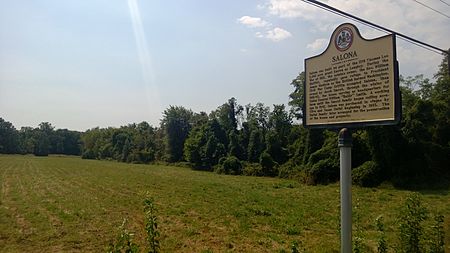Salona (McLean, Virginia)
Federal architecture in VirginiaHouses completed in 1812Houses in Fairfax County, VirginiaHouses on the National Register of Historic Places in VirginiaLee family residences ... and 4 more
McLean, VirginiaNational Register of Historic Places in Fairfax County, VirginiaPlantations in VirginiaProtected areas of Fairfax County, Virginia

Salona, in McLean, Virginia, is a former plantation house on the National Register of Historic Places surrounded by land protected by two conservation easements. The Salona homestead and grounds comprise 7.8 acres (3.2 ha) within the 52.4-acre (21.2 ha) site, and are protected by a 1971 easement held by the Fairfax Board of Supervisors. A much newer conservation easement held by the Northern Virginia Conservation Trust added an additional 41 acres (17 ha), of which 10 acres (4.0 ha) will be placed in active recreational use, and the rest used for passive recreation, such as trails.
Excerpt from the Wikipedia article Salona (McLean, Virginia) (License: CC BY-SA 3.0, Authors, Images).Salona (McLean, Virginia)
Sothoron Road,
Geographical coordinates (GPS) Address Nearby Places Show on map
Geographical coordinates (GPS)
| Latitude | Longitude |
|---|---|
| N 38.938333333333 ° | E -77.169166666667 ° |
Address
Sothoron Road
Sothoron Road
22101 , Langley
Virginia, United States
Open on Google Maps




